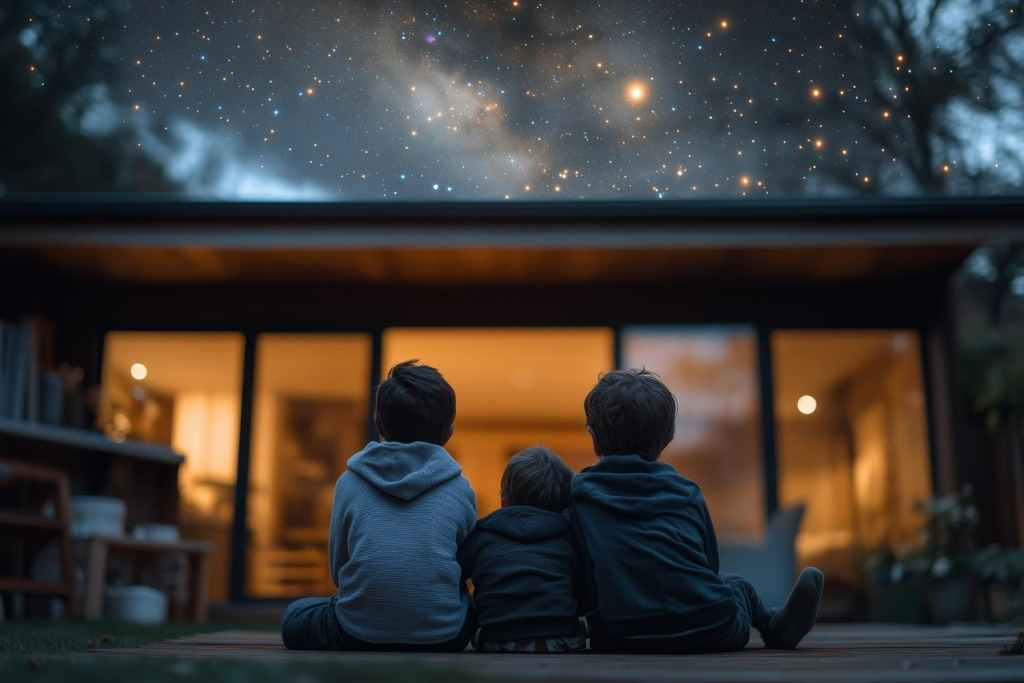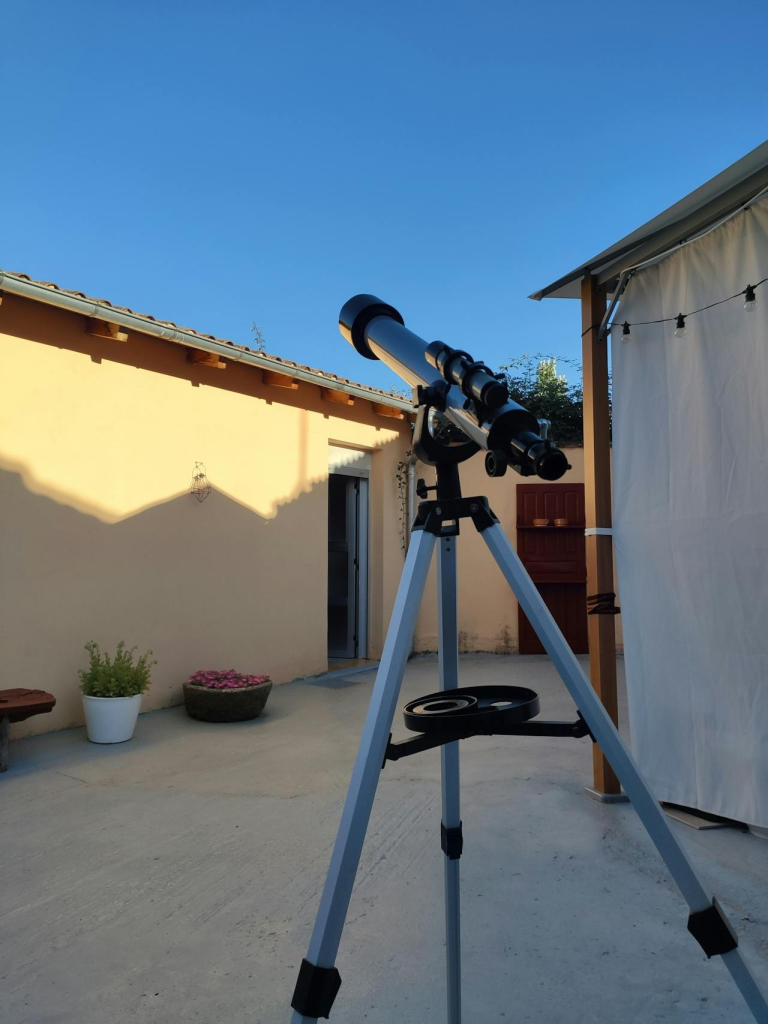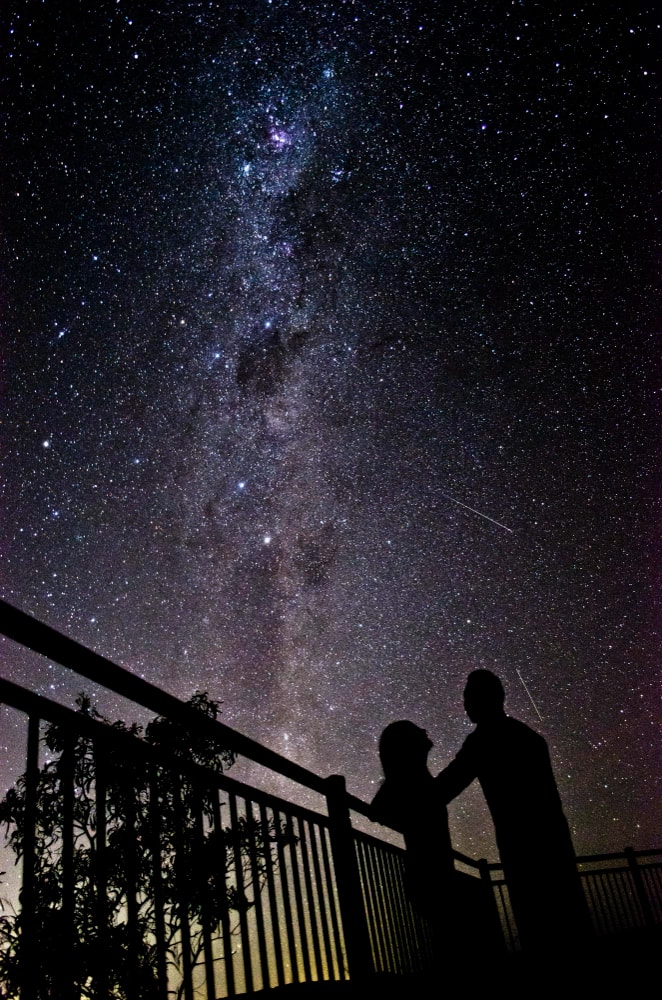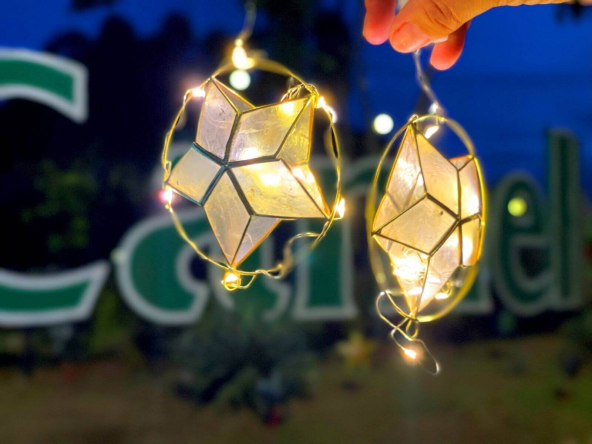
In today’s fast-paced and often digital world, finding meaningful ways to reconnect with your loved ones and spend time outdoors is more important than ever.
Evenings under the night sky offer a chance to slow down, breathe in the fresh air, and rediscover the beauty of the universe right from your own home.
Simple space and set-up, extraordinary experience
Stargazing is one of the simplest and most extraordinary experiences you can share as a family. All you need is a bit of space and the night sky. It transforms your garden into a personal gateway to the cosmos, encouraging curiosity, creativity, and connection.
Whether you’re an amateur astronomer or just looking for a unique way to spend a summer evening, a stargazing experience at home can significantly enhance your appreciation of the universe.
Let’s explore how you can design your own backyard planetarium, get the right equipment, and enjoy stellar experiences with family-friendly stargazing sessions.

Why Stargazing is the Perfect Family Activity
Spending time outdoors has been shown to play a crucial role in mental wellness, reducing stress and strengthening family bonds.
A chance to explore the wonders of space
A stargazing experience provides a window into celestial objects and encourages kids and adults alike to wonder about our place in the world and beyond.
Observing stars, planets, and celestial events like meteor showers or planetary alignments in the night sky gives everyone a chance to explore the wonders of space in a relaxed and meaningful way.
The beauty of stargazing is that it doesn’t require traveling to remote observatories or investing in expensive gear right away.
With a clear view of the sky, even the naked eye can reveal constellations (Orion, the Big Dipper, and Cassiopeia, to name a few), and even the Milky Way.
Some nights, when the night sky is clear and you’re in a location that’s dark enough, you can watch the moon’s craters, follow the International Space Station as it crosses overhead, and even point out star clusters to spark conversations about the universe and the cosmos.

Photo by Nicolas Vignot from Pexels: https://www.pexels.com/photo/petit-telescope-sur-son-trepied-installe-dans-un-petit-jardin-a-cote-d-une-tente-d-observation-en-plein-jour-pret-a-observer-les-etoiles-avant-la-nuit-27269869/
Setting Up Your Backyard Planetarium
Designing a backyard planetarium doesn’t mean you need a massive telescope or professional binoculars. What you really need is a thoughtfully planned space where your family can gather and comfortably observe the sky.
1. Choose the Best Location for a Stellar Experience
Find a spot in your garden with the clearest view of the sky.
Avoid direct light from city lights, bright stray lights from nearby homes, or bright windows that may wash out celestial objects.
If you live in an area with light pollution, try to reduce light pollution by installing shielding or motion-activated garden lights that only turn on when necessary.
2. Create Comfortable Seating Under the Night Sky
Comfort is key to a successful stargazing experience.
Consider lounge chairs, picnic blankets, or even a small deck where everyone can lie back and gaze up at the night sky and all its constellations.
Beanbags or recliners can make it easy for kids to stay still and enjoy the stargazing experience.

3. Minimize Stray Light for Better Night Vision
Keep your stargazing space dark to allow your eyes to adjust and make the night sky visible.
Use red light instead of white bulbs when moving around since it preserves night vision. This small change can significantly enhance what you see, from the moon’s craters to planets, nebulae, and galaxies.
4. Add a Touch of Magic
String lights that can be dimmed or turned off during observation, a fire pit for warmth, and a star chart posted on a wall can make the space feel like a personal observatory and create an extraordinary experience for everyone.
The Right Equipment for Your Home Stargazing Setup
Your stargazing setup can start simple and grow as your interest in astronomy deepens.
Binoculars
Binoculars are an excellent first step for observing the moon, planets, and even some star clusters.
A small telescope will provide better clarity for distant stars, planetary alignments, and deep sky objects.
Make sure to choose equipment that’s easy to use, especially if you plan to involve children in your stargazing sessions.
Astronomy Apps
Download an astronomy app to help identify stars and constellations, point out upcoming celestial events, and guide you as you explore the heavens.
Some apps will even let you know what celestial objects are visible in the night sky, depending on where you are on Earth.
This is a great way to turn each clear night into a mini astronomy lesson.

Tips for an Amazing Stargazing Experience
Once your backyard planetarium is ready, here’s how to make every stargazing night a stellar experience:
Check Stargazing Conditions
Look for clear nights with minimal atmospheric turbulence.
Summer evenings are often great for casual viewing with the naked eye. However, if you find yourself in the Earth’s northern hemisphere, some celestial objects may be more visible.
Plan Around Celestial Events
Mark your calendar for upcoming celestial events like meteor showers, eclipses, or the next full moon. Watching these wonders together as a family turns an ordinary night into an extraordinary experience.
Let Your Eyes Adjust for Better Clarity
When you step into the dark for stargazing, give your eyes at least 20 minutes to adjust for better clarity. Avoid looking at phone screens or bright lights during this time.
Whether you’re using binoculars or are planning to simply observe the night sky with the naked eye, getting used to the dark is a crucial step to the stargazing experience.
Observe Celestial Objects Step by Step
With all the stars and constellations in the cosmos, astronomy can seem overwhelming. But it doesn’t have to be.
Start with visible objects such as the moon and bright planets, then move to star clusters and deep sky objects with binoculars or a telescope.
Keep Kids Engaged
Use an astronomy app to help them identify constellations, or ask them to draw visible star formations or even constellations. This makes your stargazing session interactive and educational.
Take Notes or Photos
Record your observations in a family stargazing journal, or try astrophotography to capture what you see.
Over time, you’ll build a collection of memories under the night sky.

A Backyard Made for the Heavens in Camella
Your dream backyard planetarium starts with having the right space, and Camella communities offer just that.
Known for thoughtfully designed neighborhoods, Camella properties provide ample garden areas where you can set up your personal observatory under the night sky, away from the direct light of city streets.
With homes located near surrounding mountain ranges and away from excessive city lights, you’ll enjoy better stargazing conditions and a clearer view of the cosmos every night.
Living in a Camella home gives your family the perfect window to explore the universe together.
Imagine stepping out into your garden on a clear night, watching the moon rise, pointing out constellations, and teaching your kids about the universe and the beauty of distant stars.
With Camella, you can create a stargazing space where the wonders of the night sky become part of your family’s everyday life.

Celebrate Life’s Milestones in Camella!
Make unforgettable memories in a Camella home.
Our communities are designed to elevate your living experience.

